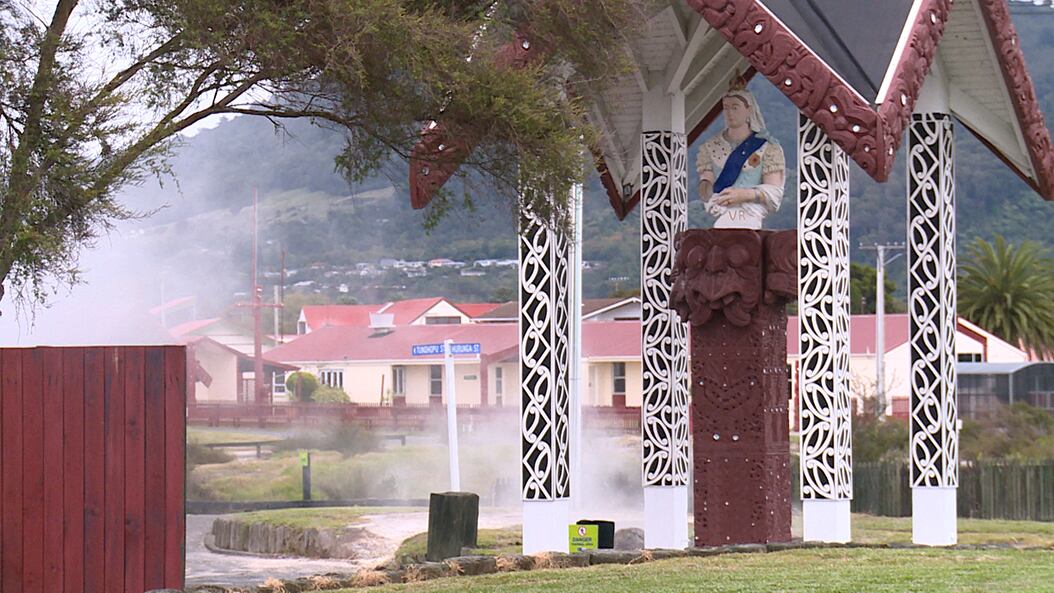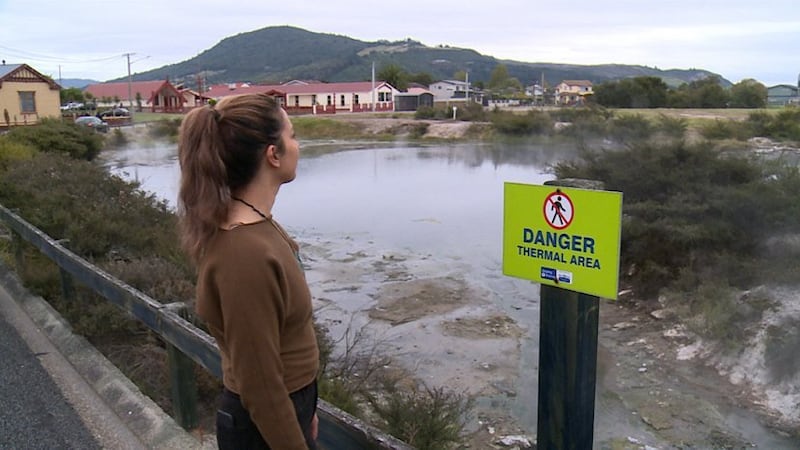Residents of Ōhinemutu have traditionally used geothermal energy for heating, cooking and bathing. Now Te Manatōpū Hau Kāinga o Ōhinemutu is looking at new technology to reconnect pipes that will carry water from geothermal bores to heat homes, especially for older people.
Some 70% of Ōhinemutu Pā residents are older people and some live in cold homes, with a lack of heating options.
That’s why the group Te Manatōpū Hau Kāinga o Ōhinemutu wants to renew and reconnect bores and pipes from hot water springs to their homes for heating, cooking, and bathing.
The Ministry of Business has granted it $50,000 for a feasibility study and the group hopes it will help them to work out how to fix geothermal bores in the pā, and redo pipes to geothermally heat homes, connect geothermal for cooking and get mineral baths working again.
Aleisha Mitchell, who is part of Te Manatōpū Hau Kāinga o Ōhinemutu, said it was disheartening that whānau had geothermal bores right outside their homes but they could not access it because having geothermal heating was really expensive.

“People think just because we live on top of geothermal activity that we are connected for heating, cooking, and bathing but we are not. There are 100 homes in the village and we are concerned about the health of our kaumatua living in cold and damp homes, she said.
The feasibility study will decide whether Ōhinemutu can use geothermal resources for heating, cooking, and bathing, which Michell knows is possible as they are living on top of it and have been since the arrival of the Te Arawa waka. “But also ensuring we are able to do it sustainably so we are not affecting our ngawha (hot springs). We are not going to have hydrothermal eruptions like that, we want to do it safely”.
Climate change timing
Lani Kereopa of Te Arawa Lakes Trust, who also lives in Ōhinemutu Pā talked about the importance of harnessing this natural resource in a time of the climate change crisis.
“We have geothermal lying under our feet here. We are going to have an energy crisis in this country and our whanau, hapū, our communities need to be enabled to access our geothermal for our heating and electricity,” Kereopa said.
Kereopa’s son, Whakaaio Nopera, who grew up using their whānau bath for a short period of his childhood before its bore seized up like most geothermal bores around the pā, was excited about the possibility of reconnecting his people back to this geothermal resource.
“We can’t afford to maintain our bore every 10 years and the costs of $40,000 to $80,000 are just too high. Our bath is used for storing our bikes and stuff now, ”Nopera said.
Ministry of Business energy projects and programmes manager Andrew Millar told Te Ao Mārama the $28 million Māori and Public Housing Renewable Energy Fund aimed to trial small-scale renewable energy technologies and was part of a suite of government initiatives to improve energy affordability and create warm, healthy, and energy-efficient homes. Access to clean and cheap energy could lead to improved health outcomes for people in public and Māori housing, he said.
Te Manatōpū Hau Kāinga o Ōhinemutu will hand in the results of its feasibility study at the end of this month to the Ministry of Business Public Housing Renewable Energy Fund in the hope of receiving $2 million to restart the geothermal project.

